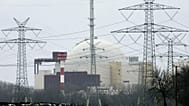A nearby star has just been caught throwing a tantrum – and it could rewrite what we know about the potential for life in the universe.
For the first time, astronomers have watched a nearby star hurl an enormous burst of charged material into space, an explosion so powerful it could strip nearby planets of their atmospheres.
The blast, known as a coronal mass ejection (CME), was detected using the European Space Agency’s (ESA) XMM-Newton space observatory and the Low-Frequency Array (LOFAR) radio telescope, according to a new study from researchers from across Europe.
Their observation, published in the journal Nature, gives scientists a new way to study how stars shape the worlds that orbit them.
During a CME, massive amounts of plasma are ejected from a star’s outer atmosphere, flooding the surrounding space.
These eruptions drive what scientists call “space weather,” such as the solar storms that can trigger auroras on Earth and erode the atmospheres of nearby planets.
These kinds of stellar eruptions are common on the Sun, but until now none had been directly observed from another star.
Astronomers have wanted to spot a CME on another star for decades because such outbursts can make or break a planet’s chances of staying habitable.
“This work opens up a new observational frontier for studying and understanding eruptions and space weather around other stars,” Henrik Eklund, a researcher at the European Space Research and Technology Centre (ESTEC) in the Netherlands, said in a statement.
“We’re no longer limited to extrapolating our understanding of the Sun's CMEs to other stars,” Eklund added.
The research team said the finding suggests that smaller stars may produce even stronger space weather than our Sun, and that such violent stellar activity could play a crucial role in determining whether potentially habitable planets can hold onto their atmospheres and stay capable of supporting life.
The first confirmed sighting of a stellar eruption beyond our Solar System was strong enough to peel away the atmosphere of any planet in its path, travelling at around 2,400 kilometres per second. This is a speed only seen in about one in 20 CMEs on the Sun.
According to the study, the burst was both fast and dense enough to completely remove the atmosphere of any closely orbiting planet.
Strong radio signal
The eruption came from a red dwarf, a type of star that is much fainter, cooler, and smaller than the Sun, with roughly half the Sun’s mass.
Researchers say that the star rotates about 20 times faster and has a magnetic field around 300 times stronger. Most of the planets discovered in our galaxy orbit stars of this kind.
When a stellar eruption blasts out into space, it creates a shock wave that sends out a burst of radio waves. The team detected one such short, intense signal from a star about 40 light-years away, relatively close by cosmic standards.
Scientists were sure that the signal was caused by a CME.
“This kind of radio signal just wouldn’t exist unless material had completely left the star’s bubble of powerful magnetism,” said Joe Callingham, one of the study’s authors and a radio astronomer at the Netherlands Institute for Radio Astronomy (ASTRON).
The radio signal was spotted using the LOFAR radio telescope, which has antenna network stations in eight European countries, and new data processing methods developed by researchers at the Paris Observatory research institution.
To confirm what they were seeing, the team also used ESA’s XMM-Newton telescope to study the star’s temperature, brightness, and rotation in X-ray light.
“We needed the sensitivity and frequency of LOFAR to detect the radio waves,” said David Konijn, one of the study’s authors and a researcher at ASTRON.
Without XMM-Newton, the findings would have been difficult to prove, he said.
“Neither telescope alone would have been enough – we needed both,” Konijn added.
The telescope has been observing the universe since 1999. ESA says it continues to play a key role in studying such high-energy events.
What the findings mean
Scientists say the discovery is important for their search for habitable worlds around other stars.
A planet’s potential to support life depends partly on its distance from its star, or whether it sits within the so-called “habitable zone” where liquid water can exist on the surface.
But that alone isn’t enough.
If a star is especially active and frequently throws out powerful eruptions, any nearby planets may lose their atmospheres entirely, becoming barren rocks even if it’s in the right zone for temperature.
The finding also adds to the existing understanding of space weather by showing that the same violent processes shaping our Solar System are active throughout the galaxy, potentially influencing other planets.


















